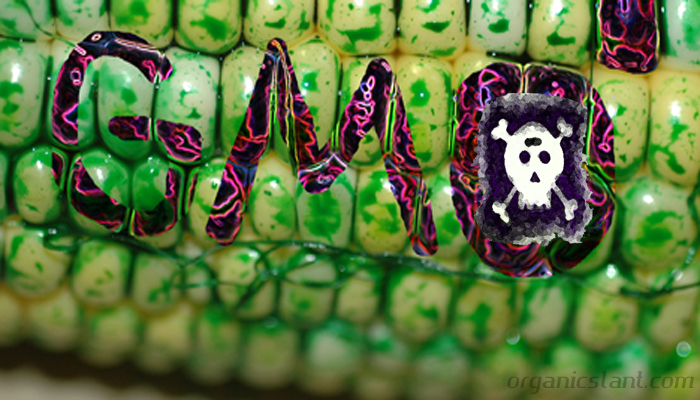 (Organic Slant) A new study from North Carolina State University and Clemson University finds the toxin in a widely used genetically modified (GM) crop is having little impact on the crop pest corn earworm (Helicoverpa zea) — which is consistent with predictions made almost 20 years ago that were largely ignored. The study may be a signal to pay closer attention to warning signs about the development of resistance in agricultural pests to GM crops.
(Organic Slant) A new study from North Carolina State University and Clemson University finds the toxin in a widely used genetically modified (GM) crop is having little impact on the crop pest corn earworm (Helicoverpa zea) — which is consistent with predictions made almost 20 years ago that were largely ignored. The study may be a signal to pay closer attention to warning signs about the development of resistance in agricultural pests to GM crops.
At issue is genetically engineered corn that produces a Bacillus thuringiensis(Bt) protein which, in turn produces a toxin called Cry1Ab. This GM corn was originally designed to address a pest called the European corn borer (Ostrinia nubilalis) and went on the market in 1996.
In the late 1990s, scientists found that Cry1Ab was also fairly affective against H. zea. But the scientists also predicted that enough H. zea were surviving to lead to the species developing resistance to Cry1Ab. That work was done, in part, by Fred Gould, an entomology researcher at NC State.
More than 15 years later, another NC State researcher wanted to see if Gould’s predictions held up.
“We wanted to do an observational study in the field to see how, if at all, things have changed since the work done in the ’90s — was there any indication that zea was becoming resistant,” says Dominic Reisig, an associate professor of entomology at NC State and lead author of a paper describing the new study.
Reisig and his collaborator, Francis Reay-Jones of Clemson, evaluated corn crop sites in both North Carolina and South Carolina over two years — and the results were fairly stark.
In the late 1990s, Cry1Ab reduced both the number of H. zea larvae and the size of the larvae, compared to non-Bt corn. But Reisig and Reay-Jones found that Cry1Ab now has little or no effect on number or size of H. zealarvae compared to non-Bt corn.
“There was a warning that zea could develop a resistance to this toxin,” Reisig says. “But no changes were made in how to manage Cry1Ab, and now it appears that zea has developed resistance.”
However, Reisig notes that they cannot say H. zea has definitively developed resistance, because the study was a field experiment, rather than an experiment done in a laboratory setting with pure Cry1Ab toxin.
“Our focus was on determining if there were real-world effects, and there were,” Reisig says. “This may also explain why zea — a significant cotton pest — is becoming less responsive to a related toxin used in GM cotton called Cry1Ac.
“This finding is of limited economic impact at the moment,” Reisig says. “Because agriculture companies have already developed new, more effective Bt toxins for use against H. zea.
“But the study is important. The methods that are agreed upon to show resistance are somewhat arbitrary. The agreed upon metrics for demonstrating field fitness are laboratory studies with an agreed upon diagnostic dose of the toxin. I, and many others, feel that field observations are screaming that changes are happening, but that this is largely ignored. That was one reason for the study.
“These findings are a reminder that we need to pay attention to potential clues about developing resistance,” Reisig says. “We can’t expect there to always be a new GM toxin available to replace the old one.”
The paper, “Inhibition of Helicoverpa zea Growth by Transgenic Corn Expressing Bt Toxins and Development of Resistance to Cry1Ab,” is published in the journal Environmental Entomology. The work was supported, in part, by Monsanto — which developed the GM corn that produces Cry1Ab.
 “The Seeds of Vandana Shiva,” the remarkable life work of Monsanto’s most powerful opponent
“The Seeds of Vandana Shiva,” the remarkable life work of Monsanto’s most powerful opponent Obama Breaks GMO Food Label Promise
Obama Breaks GMO Food Label Promise GMO Apples That Don’t Brown Hit US Stores
GMO Apples That Don’t Brown Hit US Stores
Don’t forget….
H.elping A.liens T.eaches E.ducation